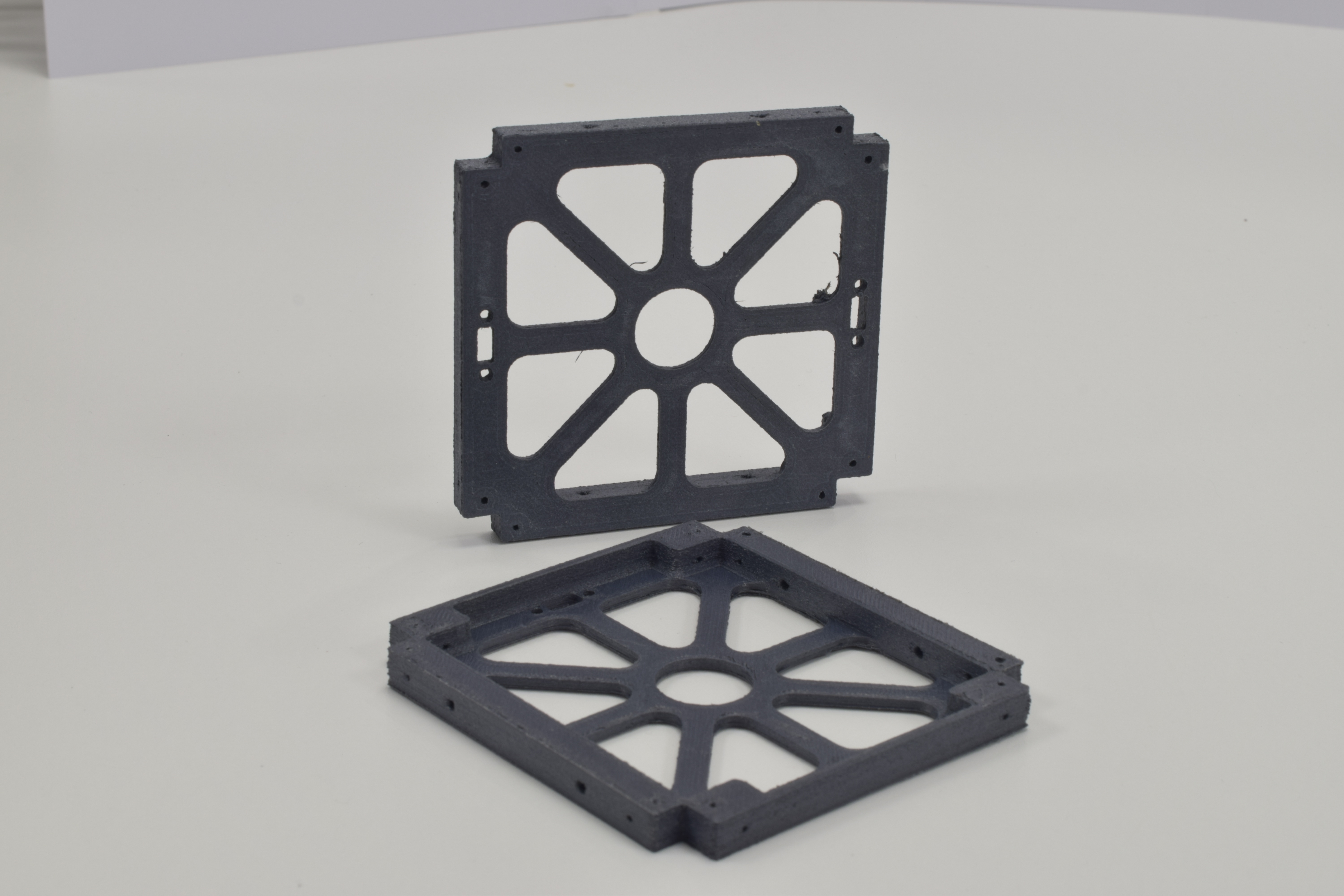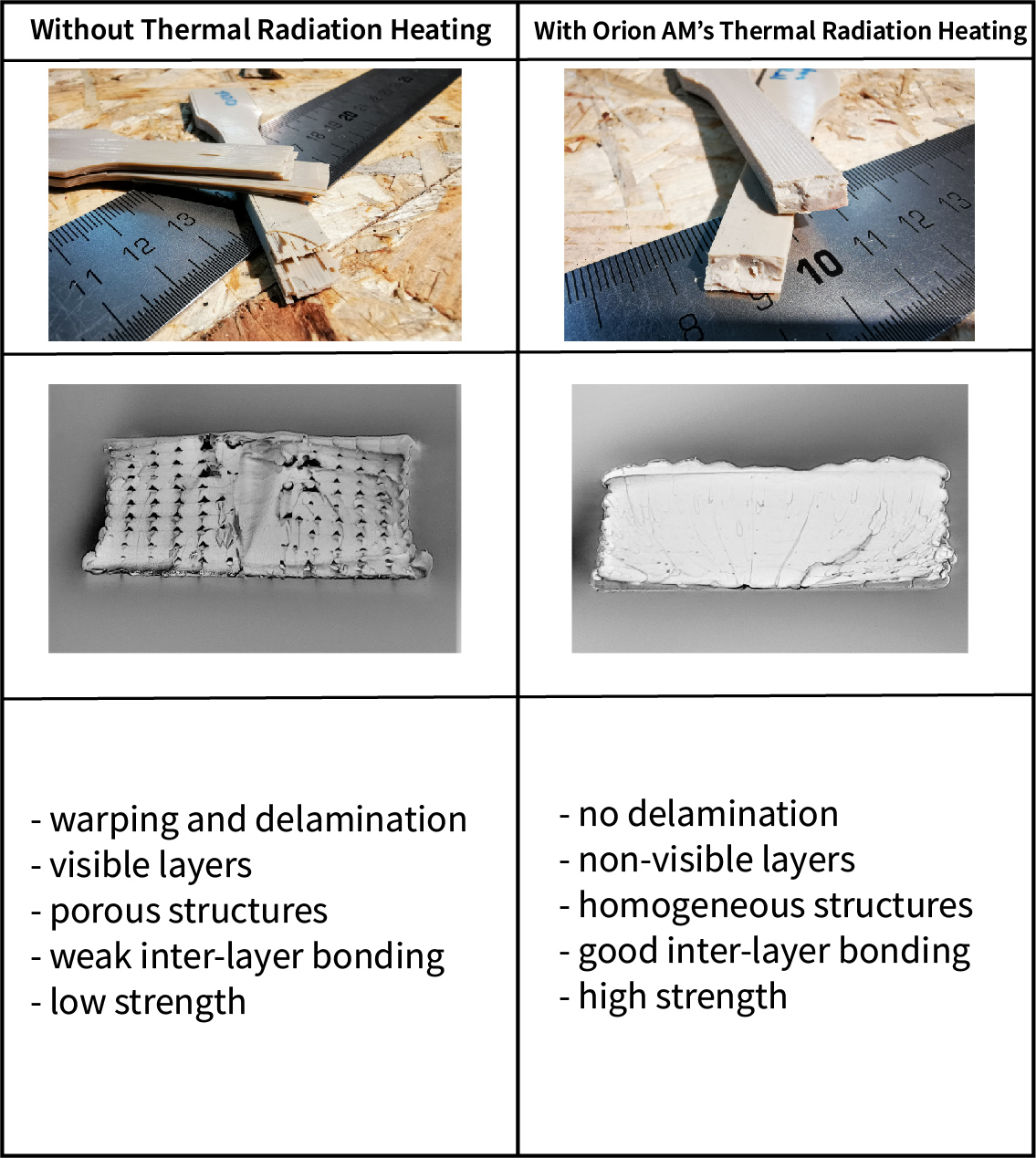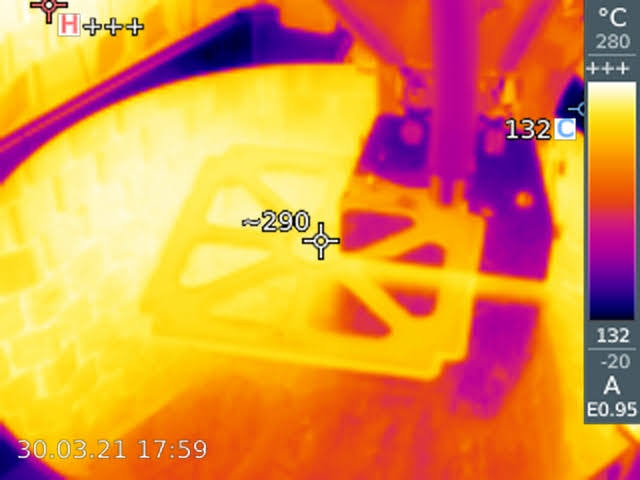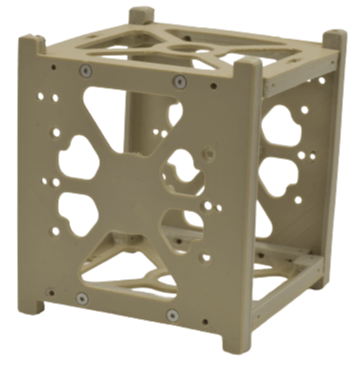What would you gain if your manufacturing processes were
8x faster than they currently are?
 Aerospace Parts 3D Printed in High-Temperature Carbon Fiber PEEK
Aerospace Parts 3D Printed in High-Temperature Carbon Fiber PEEK Our engineers at Orion tested our additive manufacturing (AM) technologies against traditional manufacturing processes and found that our 3D printing technologies delivered analogous results while reducing waste and operating costs by 95%, all while speeding up lead times from 6 weeks down to a few days. While CNC machining removes material to reveal a finished object, additive manufacturing adds material only where needed, thus reducing waste drastically. By precisely adding materials layer-by-layer, 3D printing offers manufacturers a less wasteful alternative to traditional manufacturing processes. However, Orion AM’s technology differs from other 3D printing technologies by producing lightweight thermoplastic parts that are as strong as metal using a patent-pending process.
Orion AM’s process is based on Fused Filament Fabrication (FFF), which has been mostly limited to producing prototypes due to the low strength materials that can be processed such as ABS and PLA. However, Orion AM’s technology is giving FFF a fresh revival due to the aerospace-grade polymers that it can process, which are high-temperature and high-strength thermoplastics commonly used to replace metals.
Orion’s process mainly focuses on engineering-grade polymers such as PEEK and has been able to produce final end-use products as strong as traditionally manufactured products using CNC machining or injection molding. This is mainly attributed to Orion’s patent-pending process which uses Thermal Radiation Heating (TRH) to efficiently heat the printed object up to 300C during the printing process. Consequently, Orion is propelling the additive manufacturing industry beyond producing purely prototypes and into the space of producing applicable engineering end-use parts.
Prior to additive manufacturing, PEEK was more commonly used in injection molding processes. While injection molding is able to create reliable parts in high volume, low volume bespoke production is not economically feasible and parts are still limited in complexity due to the nature of the molding process and consequently the mold itself. If the application called for a shape with intricate crooks, grooves, and gaps, the injection molding process simply couldn’t deliver a sufficient result. Another alternative was CNC machining, however, the high amount of material waste inhibits the economical feasibility of this process. With Orion AM’s A150 3D printer, PEEK and other high-performance polymers are able to be processed by additive manufacturing and printed into parts with complex shapes with strength comparable to injection molding. With the Orion A150 system, manufacturers are able to see the same benefits they would have using injection molding but without the limitations and high costs of a mold. Furthermore, parts that couldn't be produced using traditional manufacturing methods are now possible with AM.
To preface, 3D printing involves building up an object by consecutively adding material one layer at a time. The caveat with most 3D printing systems is that the material typically cools down before the next layer is added, resulting in what is commonly known as a weak inter-layer bond. With semi-crystalline high-performance polymers with high melting temperatures, this effect is exacerbated even further.
Although it is recommended to use a 3D printer with a heated chamber to heat the air (via convection) inside of the print chamber above 180C, however, this has produced varied results. Orion's TRH technology utilizes thermal radiation applied from all directions to heat the object rather than the air, which results in highly efficient heating of the printed object. The A150 system utilizes the TRH technology which applies a source of continuous thermal radiation emission and heats up the printed object up to 300℃, thus increasing the inter-layer bonding and improving mechanical strength. The Orion AM process results in prints with more homogeneous structures, high density, and high strength, making them suitable for end-use applications. The table below highlights the effect of Orion AM’s patent-pending technology.

